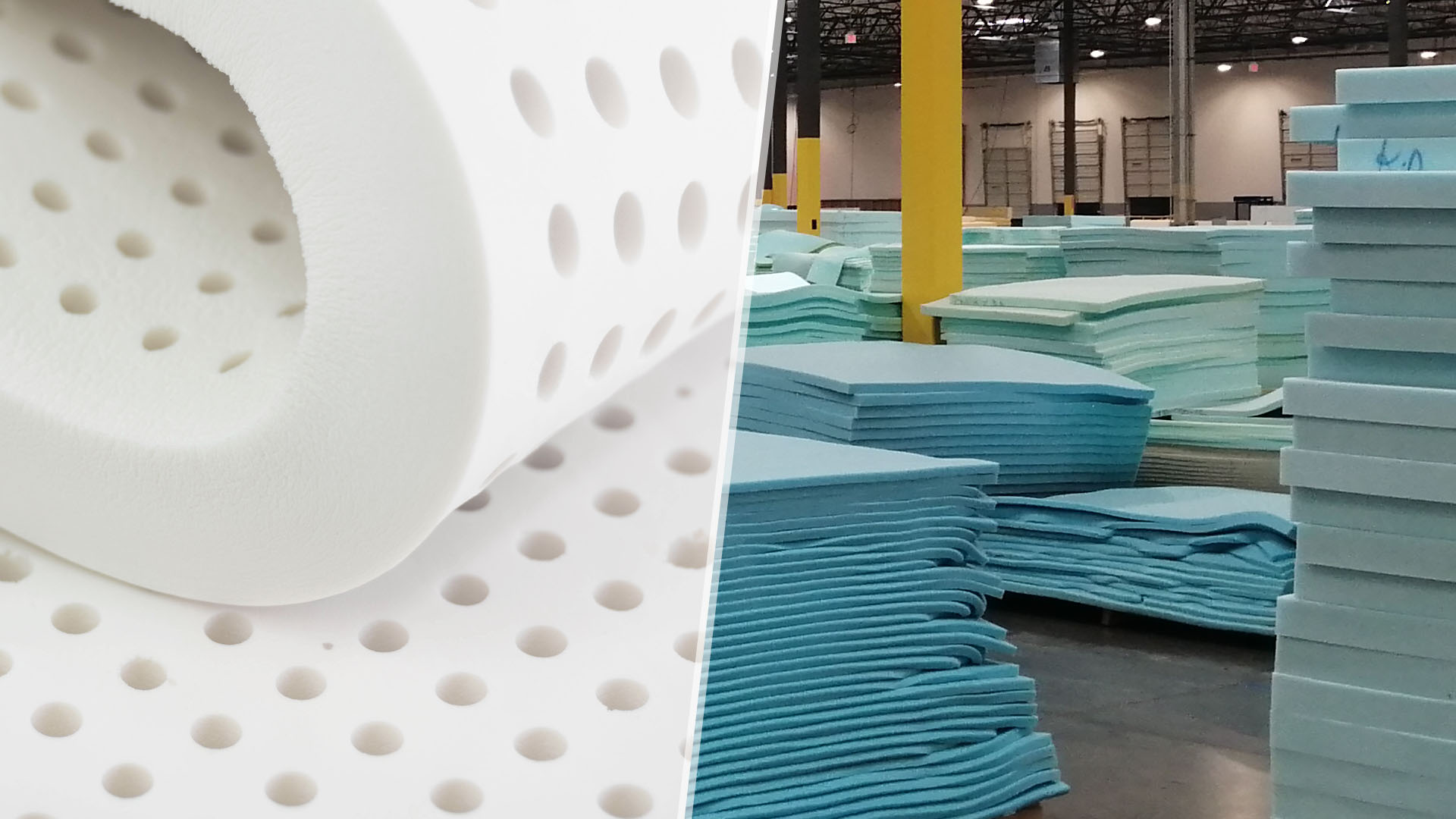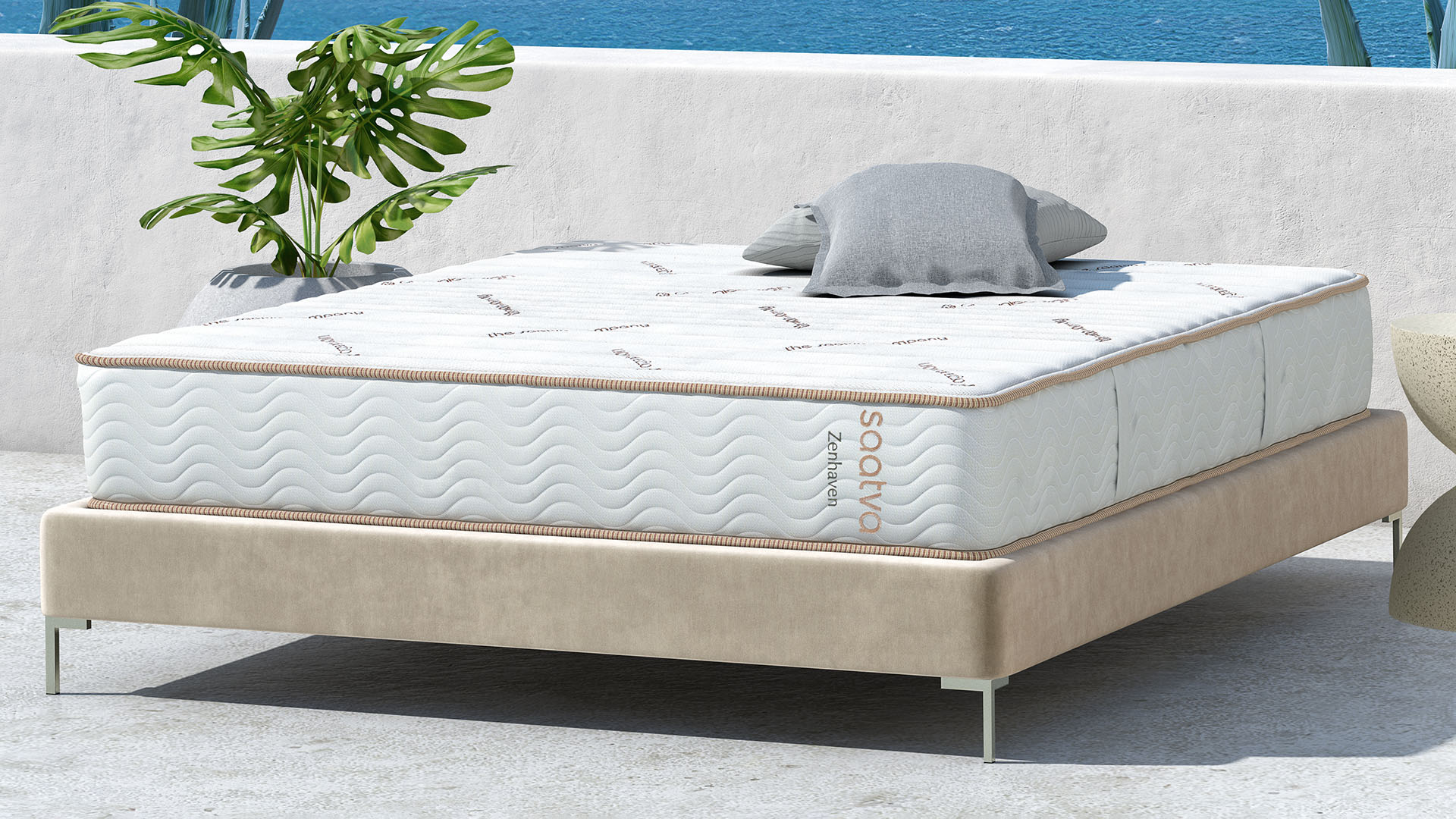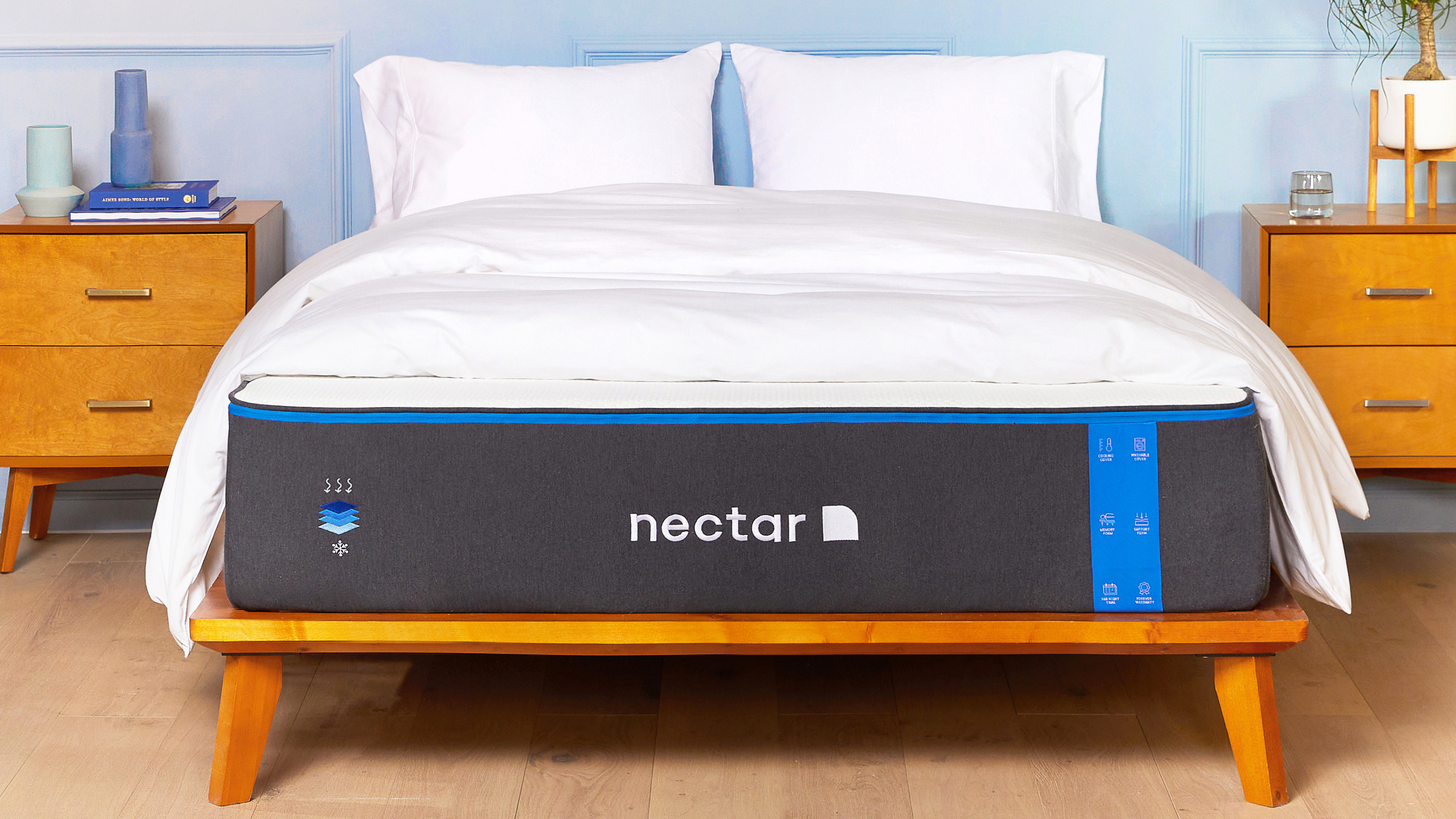Latex vs memory foam mattress: which is better?
Learn whether a latex or memory foam mattress is right for you

Latex and memory foam mattresses can both provide a good night sleep, which is why you can find both latex and memory foam mattresses on our best mattress list. How do you choose which material is right for you?
Memory foam is one of the most popular mattress styles around, thanks to its cushioning and typically affordable price point. Our best memory foam mattresses can appeal to a range of sleep styles. While latex is a less common mattress choice, the durable and hypoallergenic material offers compelling benefits. Natural latex foam is often used as an alternative to synthetic foam in a natural mattress – in fact, all of our best organic mattress picks use latex somewhere in their design.
How do you choose between the two? In this guide, we’ll explore latex vs memory foam mattresses, how they compare, and which is right for you.
What is a latex mattress?
Latex foams are made using liquid latex, a natural sap collected from rubber trees. This sap is then whipped, molded into shape, and then frozen or baked into a foam. There are two types of natural latex mattresses: Dunlop and Talalay. Dunlop and Talalay are made using the same basic material, but the manufacturing process creates small differences. Dunlop is typically softer, while Talalay offers firmer support.
Latex mattresses are popular thanks to their easy maintenance and moderate sleep surface, providing a feel that sits somewhere between the cushioning of memory foam and the bounce of springs.
In its purest form, latex is a natural material. The term ‘latex’ refers to the sap from rubber trees which is whipped and set into a foam.
That doesn’t mean latex is always all-natural. ‘Latex’ can also refer to a blend of latex and polyurethane foam, and even to an entirely synthetic foam. To be sure your mattress is natural latex, look for GOLS certification or 'all-natural' labeling. For more information head to our latex foam mattress explainer.
Get daily insight, inspiration and deals in your inbox
Sign up for breaking news, reviews, opinion, top tech deals, and more.

What is a memory foam mattress?
Memory foam is a popular mattress material, known for gently molding itself around the body to provide comfort and support. A classic memory foam will have a slow response feel that allows the mattress to cradle the body. The sleeper will sink in slightly, and the foam will take a second or two to return to shape once pressure is removed.
However, there is no strict definition for what makes a memory foam – it's less a categorical definition and more of a branding decision. That means you'll also sometimes find more responsive, springier foam described as memory foam. High-quality memory foam is denser than low-quality memory foam, although brands don't always publish this information.
Memory foam is made from liquid chemicals that combine to create a foam. These chemicals are typically petroleum- based. It is not a natural material.

Latex vs memory foam: what are the differences?
In this section we'll explore the key differences and similarities between latex and memory foam, to help you find the right mattress for your sleep style.
Sleep feel
Memory foam mattresses are known for their cushioning. They’re responsive, cradling the body where it sinks into the sleep surface and offering support to achy joints. Memory foam is particularly popular with side sleepers, because the cradling feel can help prevent pressure from building up in the sleeper's shoulder or hip in this position. Many of the best mattresses for side sleepers have thick layers of memory foam near the top (a good example is the Helix Midnight mattress).
In the video below, you can see the slow moving response of a typical memory foam mattress.
Latex mattresses have more bounce and response than the typical memory foam mattress, with a gently cushioned surface that provides some body contouring. They're often described as giving the sleeper a 'weightless' feel, and they have a more responsive sleep surface that's typically easier to change position on.
There are variations within both these mattress styles. Some memory foam mattresses have more bounce, while other latex mattresses offer a deeper cushion. Keep in mind that comfort is personal. A latex mattress might feel cushioned to you, but too firm for others.
Durability
Latex mattresses are known for their durability. Latex foam is long-lasting, offering several years of sleep before showing signs of wear and tear. While generally it is recommended you replace your mattress every seven to 10 years, a premium latex mattress could potentially last more like 10 to 15 years, depending on factors like build quality and the other materials used.
A memory foam mattress has an average lifespan of six to 10 years before it starts losing its ability to hold shape. Some memory foam mattresses can last upwards of 15 years, especially if well cared for, or if it's only being used occasionally (here are some signs it's time to replace your mattress)
Temperature control
Mattress foam of any kind will typically sleep slightly warmer than springs, just because of the denser nature of the material – air can circulate around coils much easier than it can move through a foam. Synthetic foams have a particular reputation for clinging on to body heat, and the sink-in feel of memory foam can make matters worse, because there's so much skin-to-foam contact. Natural latex foam, in contrast, is generally accepted to be better at regulating temperature.

However, the heat retention of both memory foam mattresses and latex mattresses can vary between brands. The exact makeup of the foam, as well as things like how thick it is and the other elements of the design can have a big impact on how warm, or how cool, a mattress feels to sleep on. Some of today's best cooling mattresses use memory foam, although as a general rule we'd usually recommend a hybrid mattress with springs if you struggle with overheating at night.
When investing in a memory foam mattress, it's worth being a bit wary of brands' claims . For example, many brands will make a fuss about their foam's 'open cell' design, but it isn’t that special – in fact, pretty much all mattress foams will be open cell.
Motion transfer
If you share a bed with another person, then you need to consider motion transfer. Motion transfer refers to how much movement you can feel when the other person moves around in bed.
Latex foam will typically have higher levels of motion transfer. That means if your partner turns over in bed, then the vibration is likely to carry across the mattress.
The slow response feel of memory foam is especially good at motion isolation. For light sleepers, this means you’re less likely to be disturbed by a restless partner. If you've been playing around with the idea of sleep divorce – when couples sleep in separate beds while remaining in a relationship – a memory foam mattress might help you find a way to enjoy sharing a bed.
Maintenance
Latex mattresses tend to be heavy and difficult to maneuver. The dense build also requires a sturdy base, as you need a bed frame that’s capable of supporting the weight. However, the bouncier build of the latex mattress means it tends to require less flipping and rotating – instead of sagging, the foam should bounce back into place.

Memory foam mattresses are typically lighter than their latex counterparts. Good news, as they tend to require flipping and rotating. They’re also prone to sagging, as the slow response feel stays molded to your shape.
Both memory foam and latex foam mattresses tend to be good for allergy sufferers, and a better option than innerspring mattresses. Unless you have a latex allergy, in which case latex mattresses should be avoided.
Price
If you’re considering a latex mattress, be prepared to make an investment. Latex foam is typically one of the most expensive mattress materials. However, if you’re willing to make the commitment, you’ll be rewarded with a durable mattress that requires minimal upkeep.
Memory foam mattresses are available at a range of price points. If you’re considering memory foam, you should be able to find something within your budget.
Latex vs memory foam mattress: which should I buy?
Buy a latex mattress if...
✅ You want a more eco-friendly mattress: Made from natural materials, latex mattresses appeal to those looking for an eco-conscious. Just make sure the latex is from a sustainable source and isn’t mixed with synthetic latex.
✅ You prefer a more responsive sleep surface: The faster response of latex is good for combination sleepers, as the mattress moves with you and provides support.
✅ You're willing to invest in a mattress that will last: Latex mattresses are typically expensive, but they’re also durable. An investment upfront, the long-term performance can offset the cost.
Buy a memory foam mattress if...
✅ You want a mattress that will cradle your joints: Memory foam is known for its cushioned support that molds itself to your body, providing a comfortable cradle as you sleep.
✅ You share a bed: The slow response of memory foam is fantastic for motion isolation, preventing movement from vibrating across the bed. It’s great for light sleepers or those sharing with a restless partner.
✅ You're on a tight budget: Memory foam is a popular mattress material, available in everything from budget buys to premium mattresses. If you’re working with a budget, you should find a good range of memory foam options.

Ruth is TechRadar’s Sleep Writer. She’s here to help you find the perfect sleep setup for your budget and personal preferences. As well as keeping a keen eye on everything that’s going on in the world of mattresses, she regularly speaks to experts to help you learn how to improve your sleep habits, whether that’s by debunking sleep myths or explaining the science behind it all. Prior to joining the TechRadar team, she wrote features and product guides for new parents hoping to get a decent night's sleep, as well as writing for a variety of online spaces.